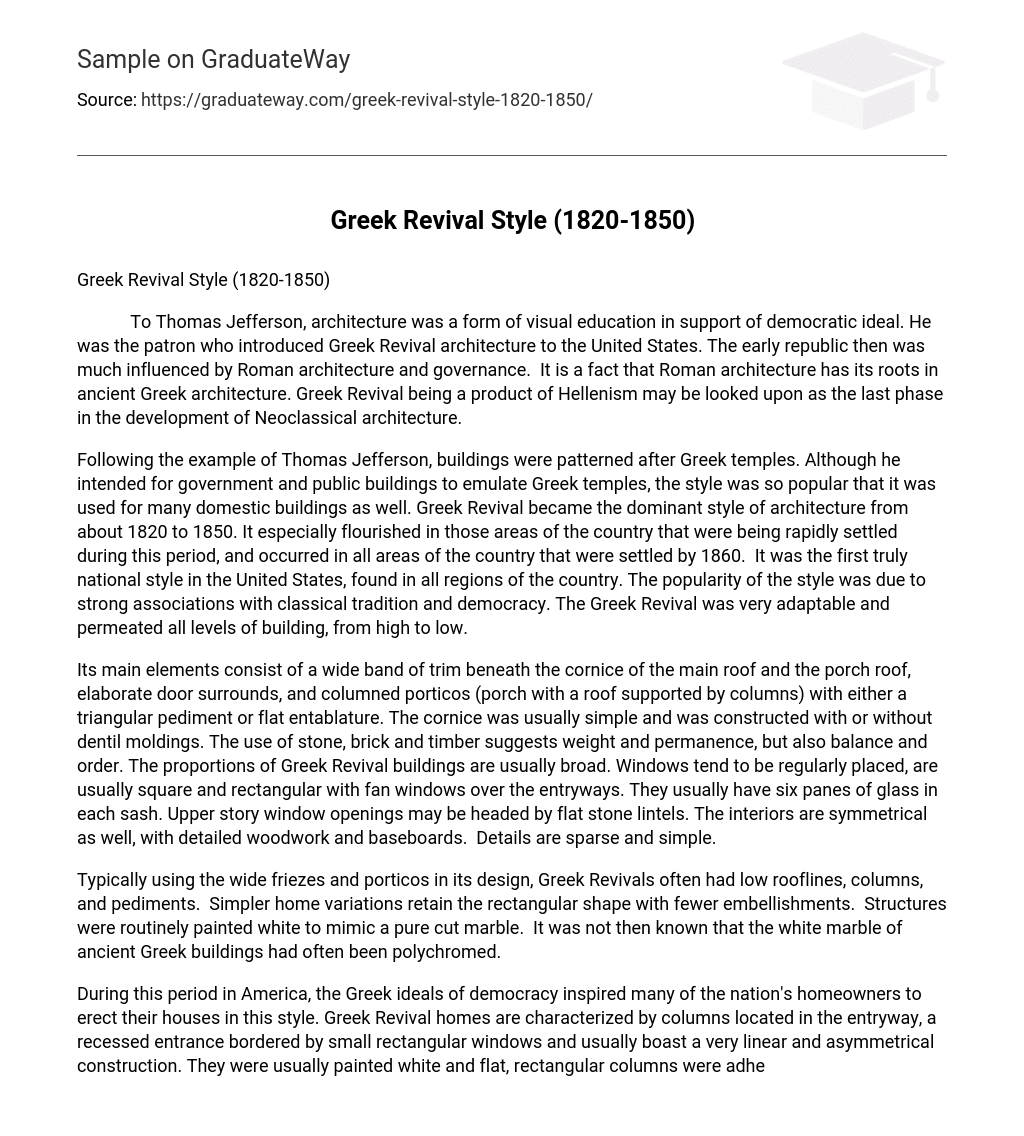To Thomas Jefferson, architecture was a form of visual education in support of democratic ideal. He was the patron who introduced Greek Revival architecture to the United States. The early republic then was much influenced by Roman architecture and governance. It is a fact that Roman architecture has its roots in ancient Greek architecture. Greek Revival being a product of Hellenism may be looked upon as the last phase in the development of Neoclassical architecture.
Following the example of Thomas Jefferson, buildings were patterned after Greek temples. Although he intended for government and public buildings to emulate Greek temples, the style was so popular that it was used for many domestic buildings as well. Greek Revival became the dominant style of architecture from about 1820 to 1850. It especially flourished in those areas of the country that were being rapidly settled during this period, and occurred in all areas of the country that were settled by 1860. It was the first truly national style in the United States, found in all regions of the country. The popularity of the style was due to strong associations with classical tradition and democracy. The Greek Revival was very adaptable and permeated all levels of building, from high to low.
Its main elements consist of a wide band of trim beneath the cornice of the main roof and the porch roof, elaborate door surrounds, and columned porticos (porch with a roof supported by columns) with either a triangular pediment or flat entablature. The cornice was usually simple and was constructed with or without dentil moldings. The use of stone, brick and timber suggests weight and permanence, but also balance and order. The proportions of Greek Revival buildings are usually broad. Windows tend to be regularly placed, are usually square and rectangular with fan windows over the entryways. They usually have six panes of glass in each sash. Upper story window openings may be headed by flat stone lintels. The interiors are symmetrical as well, with detailed woodwork and baseboards. Details are sparse and simple.
Typically using the wide friezes and porticos in its design, Greek Revivals often had low rooflines, columns, and pediments. Simpler home variations retain the rectangular shape with fewer embellishments. Structures were routinely painted white to mimic a pure cut marble. It was not then known that the white marble of ancient Greek buildings had often been polychromed.
During this period in America, the Greek ideals of democracy inspired many of the nation’s homeowners to erect their houses in this style. Greek Revival homes are characterized by columns located in the entryway, a recessed entrance bordered by small rectangular windows and usually boast a very linear and asymmetrical construction. They were usually painted white and flat, rectangular columns were adhered to the facade of the home if the owner could not afford free-standing columns. Front doors were surrounded by narrow sidelights and a rectangular line of transom lights above, door and lights usually incorporated into more elaborate door surround (ancient Greek structures did not use arches).
Some examples of Greek Revival buildings can be found in West Virginia where it houses three popular Greek Revival courthouses. They are located in Brooke (1849), Greenbrier (1837) and Jefferson (c. 1836, restored after the Civil War and remodeled in 1916 using elements of Colonial Revival architecture). Another example is the Follett House (1840-41) in Burlington, Vermont and the State Capitol building in North Carolina (1833-1840).
;





